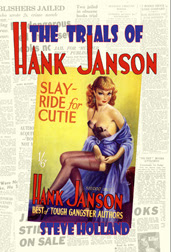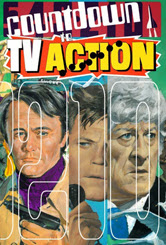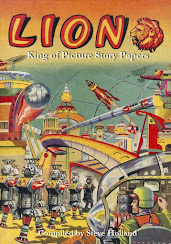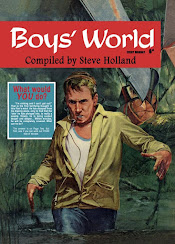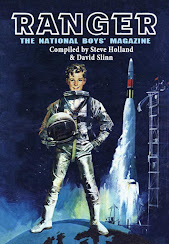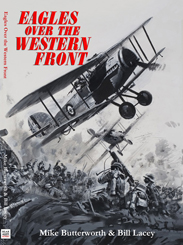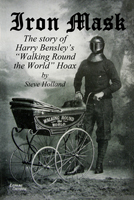
According to a report by market research company Mintel, children's comics and magazines have seen a rise in sales of 72% in the past five years, up from £79 million in 2003 to £136 million today. The report claims that the launch of titles such as
Doctor Who Adventures,
In the Night Garden and
The Simpsons have helped boost the industry.
Mark Brecchin, Senior Leisure Analyst at Mintel, says, "It seems that the humble comic is standing the test of time and even today they provide an ideal treat for children. The market for this traditional favourite has gone from strength to strength due to a host of new launches, price rises and the fact that publishers now bring out more issues per title each month."
And therein lies the problem of analysing the success or failure of the current comics' industry: even Mintel admit that they are not comparing like for like. Price rises will account for a surge in the overall market value and publishing 13 issues rather than 12 issues a year will add another 8% to revenues for a monthly title; in the period in discussion,
Doctor Who Adventures switched from fortnightly to weekly, doubling the number of issues per year but shedding 40% of its readership per issue. Overall market value does not take rising costs in production, printing and distribution into account and any magazine publisher, from the lowliest one-man operation to the biggest corporation, will tell you that they are facing tough times.

Brecchin continues, "Many of us will remember comic book heroes Dennis the Menace, Minnie the Minx and Desperate Dan. And while you might think that when faced with competition from modern technology, comic books would have been left behind, this childhood classic [
The Beano] is still going strong today—albeit with a modern twist.
"New titles coming to the market, such as
Dr Who Adventures and
In the Night Garden, have proved popular but old favourites such as the
Beano and
Dandy also have strong circulation figures today. These traditional characters clearly still strike a chord with a new generation of youngsters.
"Sales of comics have flourished despite the wide variety of media and other forms of digital entertainment now aimed at pre-teens. Children today enjoy reading and sharing comics, and there is no real indication of replacement by other media."
If only that were true. The
Beano and
Dandy have both been shedding circulation for years. Although I can only offer estimates, the circulation of
The Beano ten years ago was around 230,000 and around 100,000 for
The Dandy. Today's figures (
see here for the last report I did on circulation figures for January to June 2008) are around 60,000 and 20,000 respectively. The latter figure is particular worrying and
Dandy is probably only sustained because
Beano-Dandy is considered a unit as far as advertising is concerned. 20,000 is
not a strong circulation.
The Herald ran a feature based on the Mintel report (
"Standing test of time: children's comics see huge sales surge" by Catherine Fegan, 26 November), quoting BBC Worldwide managing director Toni Round as saying that TV tie-ins had allowed publishers to tap into the pre-teen market, resulting in a surge in sales:
"Primetime shows like
Dr Who are watched by children across the country. Tie-ins have swelled interest and pushed up sales and branding has been the key element in the recipe for success. The magazine published in conjunction with
In the Night Garden is an example of a refreshed brand that has responded to what kids are interested in at the time. It's a cyclical branding process."
 In the Night Garden
In the Night Garden is not so much a "refreshed" brand as an entirely new brand. The first issue appeared in 2007 with sales of around 110,000. The last available figure was down a fraction to around 104,000 as the title settled. The "cyclical" nature of BBC Worldwide's launches isn't a circle but a pattern of established titles losing sales and new titles being launched. A better analogy would be a playground slide. As one magazine goes down the slide, another magazine climbs to the top to begin its own journey down the slippery slope. I've commented on this in the past and haven't changed my view on the subject:
[T]he pre-school market has a very narrow age range and young children will grow out of watching a show fairly quickly, starting a decline in sales which is never bolstered completely by the arrival of new readers. New shows take over the most popular viewing slots, relegating a show to a less popular time slot, losing viewers in the process, especially once there are no new episodes to watch.
All of this means that a popular magazine will have a high sale for a couple of years followed by a sharp fall from grace. A good example of this is Teletubbies which, in 2002, was selling over 100,000 copies per issue but has since declined to its current figure of just over 30,000. A similar pattern can be seen in the sales of Tweenies, Balamory and the now-defunct Fimbles, all CBeebies regulars. Even the CBeebies anthology magazines, Toybox and CBeebies Weekly, which feature many of the same characters, are showing signs of decline.
Toni Round is certainly right to say that TV plays a very important role in the launch of comics from BBC Worldwide: of fourteen magazines published in 2008, ten are pre-teen titles based on TV shows (the other four are probably best described as lifestyle magazines for young girls, led by
Girl Talk and
Go Girl). BBC Worldwide cancelled six titles in 2007-08.

The figures for 2008 did get a nice boost from the launch of
High School Musical, based on the Disney TV movie series (which will almost certainly sustain its circulation in the latter half of 2008 thanks to the theatrical release of
High School Movie 3) but I'm still unsure where the optimism comes from that makes (unnamed) "experts" predict that sales of comics are set to increase a further 21% to reach £165 million by 2013 (this figure is quoted in the
Herald report linked above).
A launch like
High School Musical may boost overall sales figures up by 100,000+ copies but, at the same time, sales on other titles are falling away:
Teletubbies,
Toybox,
Balamory,
Noddy Magazine,
In the Night Garden and
Fun to Learn—
Favourites between them sold 50,000
less per issue in the same period that
High School Musical launched. Add the falls in sales of other titles and that cancels out the success of any major launch leaving a roughly static market.
If we return to the playground slide analogy, for every one or two magazine climbing up the steps, six or seven are heading steadily downwards.

Of course, it isn't all bad news.
The DFC is now six months old and is experimenting with ways to increase its subscription base by releasing an issue to Tesco's this week; Panini launched a new title,
Marvel Heroes, in October, which includes two all-new, UK-drawn strips; and Lew Stringer
has reported on the launch of a new football-based comic,
Rammie, this week.

The talent line-up for the latter is very impressive: Steve Bright, Nick Brennan, Nick Miller, Lee Healey, Duncan Scott and Lew himself. And the sales model is very different to anything else that has been tried commercially:
Rammie is specifically aimed at fans of Derby County FC, who will buy copies to sell at various outlets as well as giving around 3,000 to members of their junior club; the title will also be wholesaled through the news trade.
The comic can be tailored to fit the needs of other clubs with a new front cover, title and nine pages of new material unique to each club magazine. You can find some samples of some of the strips at the
Comic Football website.
Being an optimist (despite appearances from the above), I think comics will still be around in 2013. With any luck so will Bear Alley and we'll revisit this column and see whether "expert" opinion was correct. Hopefully we'll all have a good giggle at how badly they underestimated the growth of the market.
(* Information and quotes used in the above were derived from
The Herald,
Daily Telegraph,
The Scotsman and
UTalkmarketing.com. The pic at the top is from the online
Daily Telegraph and was credited to Paul Grover.)
 The full debut story of the recently relaunched reimagining of the Daily Mirror's Garth can now be found complete on a site called my-ebook. There's also a second volume from artist Huw-J called The Art of Garth which gives an insight into the process of how the character developed from script to finished pages.
The full debut story of the recently relaunched reimagining of the Daily Mirror's Garth can now be found complete on a site called my-ebook. There's also a second volume from artist Huw-J called The Art of Garth which gives an insight into the process of how the character developed from script to finished pages.











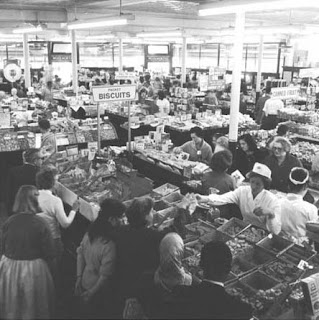

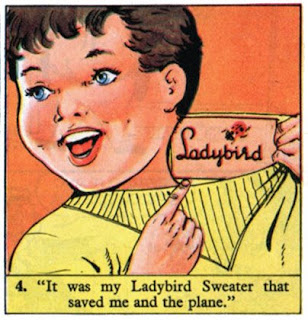






.jpg)
.jpg)
.jpg)
.jpg)
.jpg)
.jpg)
.jpg)
.jpg)
.jpg)
.jpg)



.jpg)

.jpg)
.jpg)
.jpg)
.jpg)



.jpg)
.jpg)

.jpg)
.jpg)
.jpg)
.jpg)
.jpg)


.jpg)







.jpg)

.jpg)













